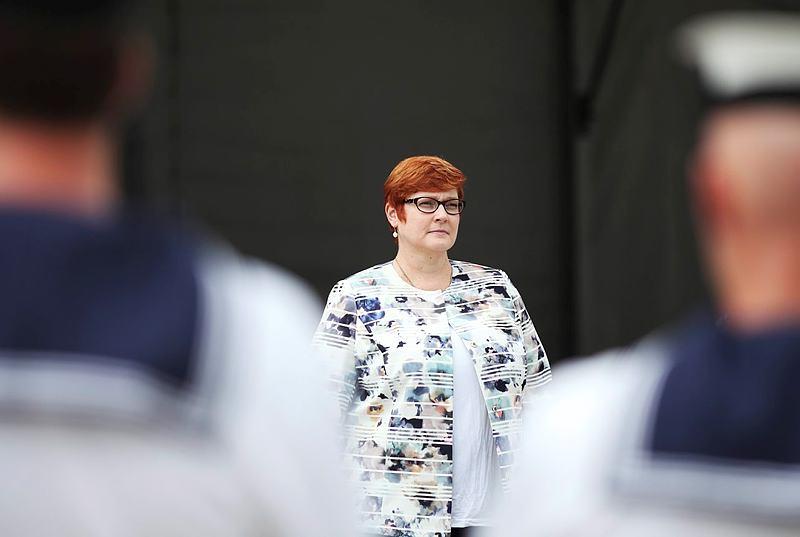The future submarine and naval shipbuilding in Australia
Posted By Marise Payne on November 18, 2015 @ 15:16
 [1]The Government has a clear strategy for achieving a productive, cost-competitive and sustainable naval shipbuilding industry.
[1]The Government has a clear strategy for achieving a productive, cost-competitive and sustainable naval shipbuilding industry.
We also know that Australia cannot afford a naval shipbuilding industry at any price. A reshaping and reform of the naval shipbuilding industry will be needed if we are to deliver the future Navy we need, at a price we can afford.
If we are to ensure that the ADF is a balanced force, with the highest levels of capability and protection we can afford, we must deliver capability that is value for money and internationally cost-competitive.
Substantial reform of the industry will be necessary and hard decisions will need to be made. The Government is willing to make that commitment. We will require industry to do the same.
We expect industry to work with us to reform the naval shipbuilding sector. We expect industry to make the necessary investments, provide the necessary skill base and build innovative new construction practices to deliver highly capable, cost-competitive naval vessels.
At the heart of this will be a commitment from industry for a productivity-based culture, which includes management, the Unions, the workers, with supportive government.
Industry will need to build complex project management skills in senior management and across the workforce. It will need to build experience in its workforce and sub-contractors, it will need to be focused on quality management and delivering the right product at the right price on time the first time.
As you’ll also be aware, submissions for the Competitive Evaluation Process to find an international partner for the Future Submarine Program are due to be received at the end of this month.
The Government understands the great significance of the decision-making process that will occur once these submissions are received and of the decision itself for Australia’s future.
We are determined to get the best capability and the best value for money through the Competitive Evaluation process for the Future Submarine.
There have been some criticisms of the Competitive Evaluation Process that have suggested that the timeframe for the process is not adequate to fully analyse the substantial range of issues that must be considered in proceeding with the submarine’s development.
I would note that all three participants, DCNS of France, TKMS of Germany and the Government of Japan have stated that they are satisfied with the timeframes that we have given them for the Competitive Evaluation Process. Some may say ‘of course they’d say that’ —perhaps they would—but we know that all three participants have invested in developing their responses to meet the schedule and that all three have done everything they can to demonstrate their suitability to be our partner.
When it comes to considering the proposals and making the decision, let me assure you that the Government does not intend to be rushed. This is too important a decision for that. We will take the time required to consider all options and to allow a comprehensive assessment against all of the Government’s criteria to be made.
There is a risk in moving too quickly, clearly, but there is also risk and potential cost, in adding more time to this process.
The Government has considered all the risks inherent in the development activities, and taken the best possible advice from the Department of Defence, and we have chosen this process as the most appropriate means to manage those risks given the nature of the process and the need for this critical capability.
This process provides a way for Australian industry to have the greatest possible involvement in the program, without any compromised cost, capability, schedule or risk.
In addition, the Expert Advisory Panel appointed by Government continues to oversee the conduct of the Competitive Evaluation Process to ensure the fairness and equity of that process.
The aim of the CEP is to inform Government’s decision on the international partner to work with Australia to develop and deliver the Future Submarine.
We have sought and are expecting proposals from all three participants to include proposals for onshore, offshore, and hybrid build options.
Through this process we will assess the ability of participants to work closely with us, including how each would approach our capability and sustainment needs, and how cost and schedule would be managed throughout the program.
For a program of this nature, we need to work closely with the selected international partner to fully develop the Future Submarine. This is going to be very resource-intensive for both Defence and the selected international partner.
Once the partner is selected, there will be about three years of further development work before we finalise the Future Submarine’s capability and cost.
Indeed, lessons from the Collins Class submarine program and other international submarine acquisition programs clearly indicate the need for such collaboration to arrive at the best understanding of capability, cost and schedule.
We need to commence this intensive work without further delay to avoid a submarine capability gap in the future.
As it stands, avoiding a capability gap will require us manage the life of the Collins Class submarines beyond their planned withdrawal. We’ll need to continue to invest in the current fleet for years to come. It’s important we don’t lose sight of this—the Collins Class submarine will continue to be a potent capability for the ADF for years to come.
I’m looking forward to the comprehensive consideration of the CEP, and being able to announce our decision on the international partner for Australia’s future submarine next year.
Regardless of that decision, we need the sovereign ability to maintain that future submarine over many decades. And this will generate significant opportunities and challenges for Australian industry and the science and technology community.
Article printed from The Strategist: https://aspistrategist.ru
URL to article: /the-future-submarine-and-naval-shipbuilding-in-australia/
URLs in this post:
[1] Image: https://aspistrategist.ru/wp-content/uploads/2015/11/Payne-M.jpg
Click here to print.